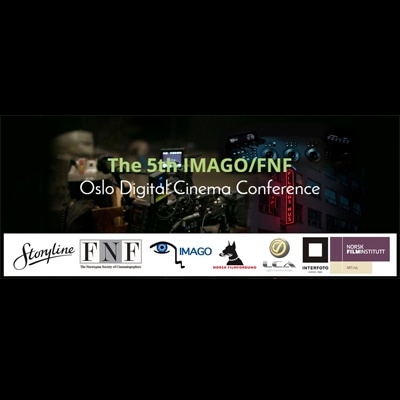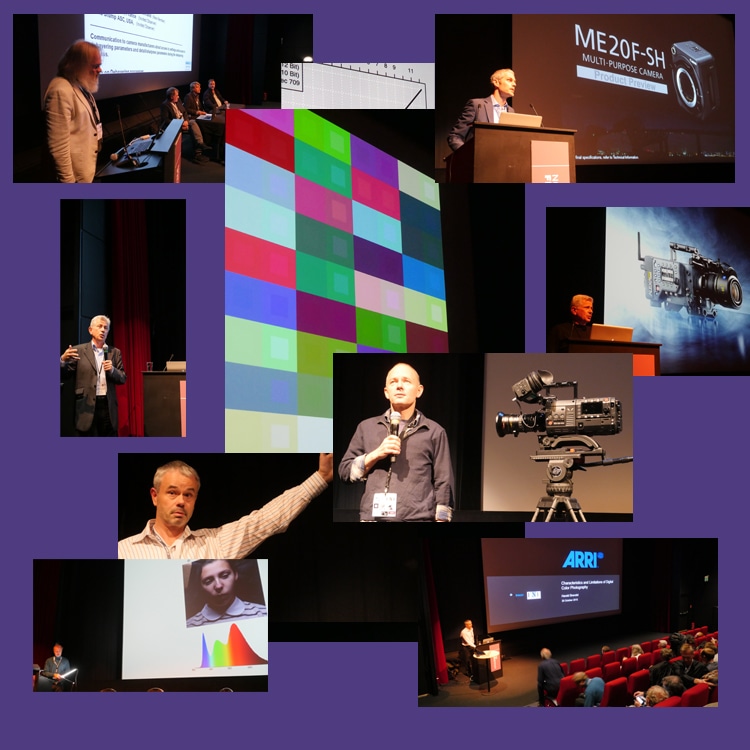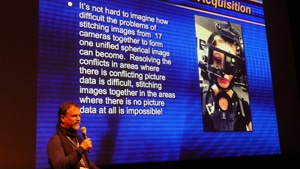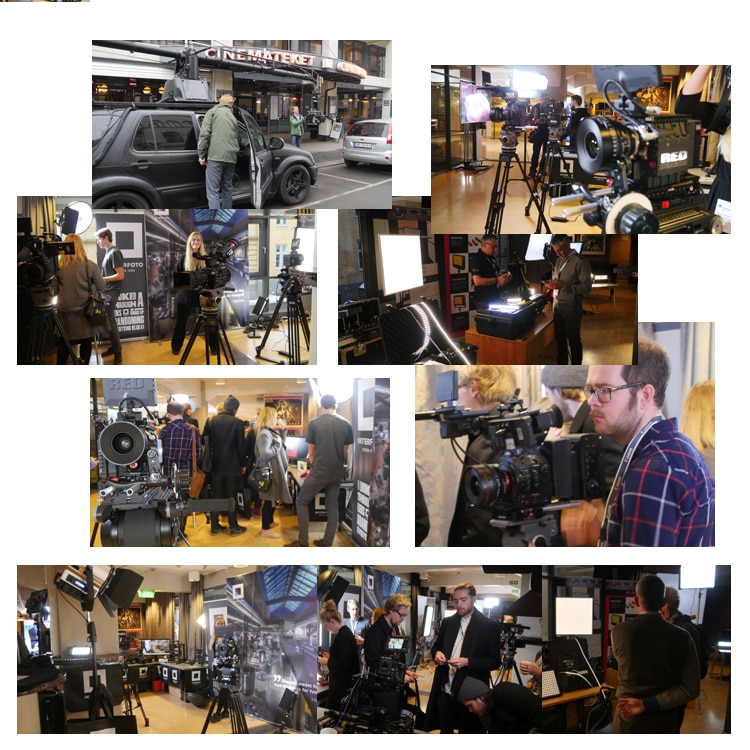
Far from those hyper days of 2006 when the Oslo Digital Cinema Conference was held for the first time, this 5th edition marked the total acceptance and consolidation of the electronic image in the industry. In contrary to that year of 2006 when many of the cinematographers were still resisting and struggling to
understand the electronic image this time marks a definite understanding and a desire to look forward to a brighter future. The digital image is no longer a mystery for the majority of the cinematographers. The language of pixels, lines, bit rate, frame rates, compression, poses no doubts today. The aim now is to use the tools and the technology at its outmost for creative and artistic images. This is what the cinematographer is looking forward now. The old days of digital turmoil are now overpassed and now is time to look to the future with a brighter mind. In this respect the conference started exactly in this point with a luxurious panel of speakers depicting «creative cinematography and camera control». The rich table of discussion brought together cinematographers, colorists and manufacturers. This great pipeline of collaboration is one of the greatest achievements of this traditional IMAGO Oslo Digital Cinema Conference which has been enough independent to bring together competitive manufacturers together. Not only achieving a high level of discussions, debates but has been prominent in promoting the digital knowledge amongst pears.
for the majority of the cinematographers. The language of pixels, lines, bit rate, frame rates, compression, poses no doubts today. The aim now is to use the tools and the technology at its outmost for creative and artistic images. This is what the cinematographer is looking forward now. The old days of digital turmoil are now overpassed and now is time to look to the future with a brighter mind. In this respect the conference started exactly in this point with a luxurious panel of speakers depicting «creative cinematography and camera control». The rich table of discussion brought together cinematographers, colorists and manufacturers. This great pipeline of collaboration is one of the greatest achievements of this traditional IMAGO Oslo Digital Cinema Conference which has been enough independent to bring together competitive manufacturers together. Not only achieving a high level of discussions, debates but has been prominent in promoting the digital knowledge amongst pears.
On the opening panel were Philippe Ros AFC (France), Tom Crocker of Sony, Harald Brendel of Arri, Mark Grieve of Red, Luc Bara of Panasonic, Dave Stump ASC , Rolf Coulanges, BVK (Germany), Kommer Kleijn SBC (Belgium), John Christian Rosenlund FNF and Cem Ozkillicci, colorist/Canada.
Many other speakers followed: Kommer Kleijn SBC and chairman of the IMAGO Committee of «Creative Technologies in Cinematography», gave us the state of the art on film projection. Harald Brendel from ARRI science, Per Böhler and Henrik Moseid from Softlights/France has thought us about color science. The limitations of color digital photography and about LED lighting color limitations.
The DIT is considered a crucial element for the camera crew and for the cinematographer on set. Only with the aid of a DIT the cinematographer can create and protect his images. As always archiving was another matter presented with multiple manners now at the disposal for Tv stations and production companies to preserve and archive images.
The first day ended with the screening of the highly acclaimed Mike Leigh’s film «Mr. Turner» beautifully shot by Dick Pope BSC. The movie chosen couldn’t be more appropriate to show at the digital conference. The great cinematography of Dick Pope BSC won him many awards including the BSC award along with a prestigious nomination for an academy award was entirely shot on digital format. The following day the audience could learn about the relationship developed between the director Mike Leigh and the cinematographer all through many years of close collaboration. The morning section of the second day was entirely dedicated to the career of Dick pope and the way he made it with a competent moderation of Rolv Haan FNF running several clips from films shot by Pope.
The afternoon was the opportunity to be in close range with drones, cranes and fresh news from ARRI presenting a new Alexa along with Panasonic presenting the new Varicam and Canon with its extreme low light model.
Dave Stump ASC presented us with the results of ACES and virtual reality.
The third and last day there was a case study. The feature film «Wave» a Norwegian production shot by John Christian Rosenlund FNF demanded a great deal of VFX and post-production. John explained the whole of his involvement with the project from pre-production to color correction which was well demonstrated by Cem Ozlillicci the Canadian colorist.

The ODCC was again a great success. The attendance of several cinematographers coming from different countries especially from Denmark to attend the conference is always remarkable moment to be mentioned. The DFF every year supports 20 members to attend the Congress paying the entrance fee, accommodation and flight. These funds are the result from secondary author rights that the Danish cinematographers get from their collective society and this fund is always used for education purposes. This is an example that could be done in the rest of Europe and in the world.
A small Micro Salon was set on the first and ground floor of the event.
VISIT http://www.odcc.no/


























